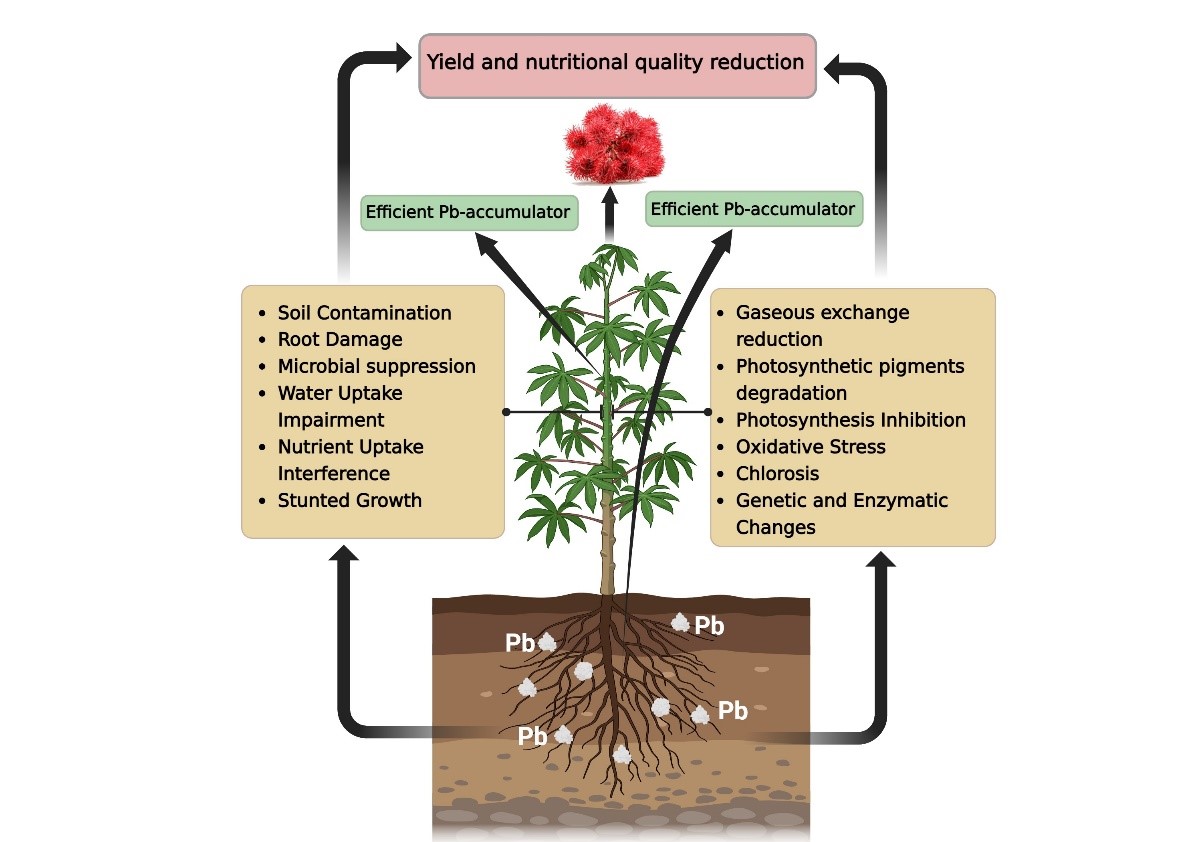
Present study investigated the unknown responses of five castor bean genotypes to lead (Pb) contaminated soil, focusing on their growth and metal uptake efficiency. A unique aspect is the simultaneous assessment of multiple genotypes, offering a holistic view of their reactions to soil contamination. Five castor genotypes (NIAB Gold, NIAB Spineless, NIAB-2020, DS-30, and C-3) were grown in pots filled with soil spiked with varying concentrations of Pb (0, 100, 200, 400, and 800 mg kg-1). Results have shown that increasing Pb concentrations led to a general decrease in plant biomass and photosynthetic pigments in all castor genotypes, however NIAB-2020 and DS-30 showcased remarkable resilience. Interestingly, the activities of antioxidant enzymes revealed a contrasting pattern. While superoxide dismutase and peroxidase activity declined, catalase and ascorbate peroxidase activity increased with higher Pb levels. Notably, DS-30 and NIAB-2020 exhibited the maximum catalase and ascorbate peroxidase activity at highest Pb concentration. Furthermore, these genotypes displayed impressive Pb uptake, particularly in their roots, exceeding the other tested genotypes. With metal translocation factor less than 1, NIAB-2020 and DS-30 showed promising potential for phytostabilization through efficient Pb accumulation, coupled with strengthened antioxidant defense mechanisms and restricted translocation, making them compelling candidates for eco-friendly remediation strategies.
Total file downloads: 31